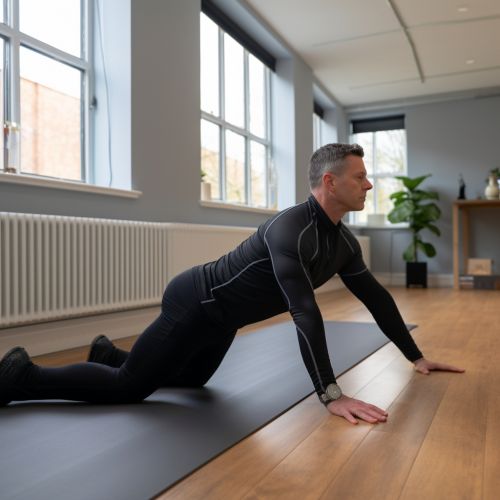Flexibility exercise
Definition and Importance
Flexibility exercise, also known as stretching, is a type of physical activity that is designed to improve the range of motion of the joints and increase muscle elasticity. It is an essential component of any fitness program and plays a crucial role in maintaining overall health and well-being.
Flexibility exercises are not only beneficial for athletes but also for individuals of all ages and fitness levels. Regular stretching can help prevent injuries, improve posture, increase physical performance, and promote relaxation.
Types of Flexibility Exercises
There are several types of flexibility exercises, each with its own benefits and techniques.
Static Stretching
Static stretching is the most common type of flexibility exercise. It involves holding a stretch for a prolonged period, usually between 15 to 60 seconds. This type of stretching is beneficial for increasing flexibility and is often performed after a workout to help cool down the body and improve muscle recovery.
Dynamic Stretching
Dynamic stretching, on the other hand, involves moving parts of your body and gradually increasing reach, speed of movement, or both. It is an excellent way to warm up before physical activity as it prepares the muscles for the work they will be doing.
Ballistic Stretching
Ballistic stretching involves bouncing movements to push your body beyond its normal range of motion. This type of stretching is not recommended for everyone as it can lead to injuries if not done correctly.
Proprioceptive Neuromuscular Facilitation (PNF)
Proprioceptive Neuromuscular Facilitation (PNF) is a more advanced form of flexibility training that involves both the stretching and contracting of the muscle group being targeted. PNF stretching was originally developed as a form of rehabilitation and is very effective in increasing flexibility.
Benefits of Flexibility Exercises
Regular flexibility exercises offer numerous health benefits.
Injury Prevention
One of the primary benefits of flexibility exercises is injury prevention. Regular stretching can help increase the range of motion in the joints, which can help prevent injuries during physical activity.
Improved Physical Performance
Flexibility exercises can also improve physical performance. By increasing the range of motion in the joints, flexibility exercises can allow for more movement around the joints, which can improve performance in physical activities and sports.
Improved Posture and Alignment
Regular flexibility exercises can also help improve posture and alignment. By stretching the muscles, flexibility exercises can help correct imbalances in the body that can lead to poor posture.
Increased Blood Circulation
Flexibility exercises can also help increase blood circulation. By stretching the muscles, flexibility exercises can help increase blood flow to the muscles, which can help with muscle recovery and decrease muscle soreness.
Stress Relief
Flexibility exercises can also provide stress relief. Stretching can help relax tense muscles and provide a sense of relaxation and well-being.
Incorporating Flexibility Exercises into Your Routine
Incorporating flexibility exercises into your routine doesn't have to be complicated. Here are a few tips to get you started:
- Warm up your body with light cardio activity before stretching. This can help make your muscles more pliable and receptive to stretching. - Be consistent. Like any other form of exercise, regularity is key in flexibility training. Aim for at least two to three days a week of flexibility training. - Don't bounce. Use smooth, controlled movements to prevent injury. - Don't rush. Take your time with each stretch to ensure you're stretching your muscles properly. - Listen to your body. If a stretch causes pain, stop doing it. Stretching should never be painful.
See Also
- Yoga - Pilates - Physical Therapy


